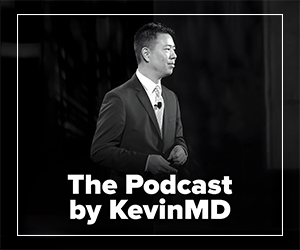Chronic kidney disease (CKD) often develops unnoticed, gradually impairing kidney function. Approximately 950 million people worldwide are affected by CKD, and it is now the 9th leading cause of death, projected to become the 5th leading cause in the near future.
For years, I was unaware of the severe health battle brewing beneath the surface—until a routine pregnancy scan in 2015, at the age of 29, changed everything. What seemed like a simple test uncovered an alarming amount of protein in my urine, indicating potential kidney problems. At the time, I never imagined that this discovery would trigger a series of health challenges that would reshape my life. Pregnancy complications such as hypertension and preeclampsia were already known risks, but a kidney issue was the last problem on my radar. This unexpected revelation marked the beginning of a long, unpredictable journey—one with missed opportunities for early diagnosis, delayed intervention, and a health care system that failed to guide me effectively through the crucial stages of my disease.
The consequences of delayed care: from dialysis to transplant
A few weeks after delivering my child via emergency C-section, I received a diagnosis that was as rare as it was serious—IgA nephropathy (IgAN), an autoimmune disease progressively damaging my kidneys. Yet, despite the severity of the disease, doctors never truly conveyed the urgency of my condition. For nearly two years, I did not pursue adequate follow-up care, partly due to my denial of the seriousness of my health issues and a lack of understanding about how to manage my condition.
By late 2017, a nephrologist finally gave me the reality check I needed: I would need dialysis or a kidney transplant within a year. However, by the time I received this referral, two years had already passed since my initial warning signs. The delay in care and the absence of a clear, actionable plan left me feeling lost and uncertain about my next steps.
Unfortunately, the window for prevention had closed, and I had missed the opportunity to slow the progression of my disease. In mid-2018, I was told I needed a transplant, so I began searching for a new kidney. After moving from New York City to San Diego, I faced another setback: my transplant was canceled due to a clinical oversight. This left me feeling hopeless and frustrated, as if the health care system had failed me.
Dialysis became my new reality. For nearly two years, I underwent treatments, clinging to the hope that a kidney donor would come forward. After more than 44 potential volunteer donors, I finally received the life-changing news I had been waiting for: a match. It came in an unexpected and deeply humbling form—a woman who had originally planned to donate to another recipient chose to donate to me instead when the other person found a better match. This selfless act of generosity marked the end of a long, difficult chapter in my life and opened the door to a new beginning, free from the constant cycle of dialysis.
What I wish I’d known and how we can do better
Looking back, there are several insights I wish I had gained earlier. I wish I had received more proactive guidance and resources when I was first diagnosed with kidney issues. Early intervention could have slowed the progression of the disease, potentially preventing my need for dialysis or a transplant altogether.
To put it simply, we need to do a better job with early screening and proactive care. Tests to check for protein in urine should be part of routine check-ups, especially for those with risk factors for kidney disease. Additionally, there should be clear guidelines for identifying and managing at-risk patients—complete with a checklist of kidney disease risk factors that both patients and providers can reference.
Another major issue is the siloed nature of care. Kidney disease often falls through the cracks, with specialists and primary care providers failing to coordinate effectively. This fragmented approach leads to missed opportunities for early interventions and delayed treatments that ultimately harm patients.
The role of technology and provider support in improving outcomes
One potential strategy to improve outcomes for individuals with CKD is integrating technology. Health care providers can leverage advanced tools to identify at-risk patients, connect them with the appropriate resources, and develop tailored care plans. Whether through recommending lifestyle modifications or facilitating timely nephrology referrals, technology can streamline the care process, ensuring that patients are effectively managed and not lost in the complexities of the health care system.
Additionally, patients should be monitored regularly. If they demonstrate risk factors, they should be retested periodically to track disease progression. This proactive approach would allow for interventions before dialysis becomes necessary. Health care providers also need to meet patients where they are—physically and emotionally. Point-of-care testing, for example, could allow patients to get tested in places where they feel more comfortable and empowered, such as local pharmacies or health clinics.
Looking ahead, predictive analytics could be key in transforming CKD care. These platforms can assess individual patient risks, help determine the frequency of testing, and guide interventions based on specific patient needs.
Raising awareness and taking action
Despite its widespread prevalence, CKD is not yet widely recognized as the public health crisis it is. For example, Dr. Salvatore Viscomi, MD, CEO of Carna Health, and his team have deployed CKD screening and monitoring programs in regions as diverse as Cameroon and Bermuda. These initiatives highlight a concerning rise in kidney disease diagnoses, underscoring the urgent need for greater awareness and improved systems for early detection. To expand, Carna’s platform focuses on increasing awareness, improving patient engagement, and supporting health care professionals in determining the appropriate care pathway. By utilizing AI, the platform personalizes risk assessment and treatment, ensuring that individuals, regardless of where they live, have access to effective care.
The answer to this growing epidemic lies in collaboration and the expansion of kidney disease screening programs. Early detection is key, but it requires health care providers working together with patients to create a system of care that is both proactive and preventative.
On a personal level, I had to grieve the life I once knew and the person I used to be to embrace my new reality. But this transformation was not just physical—it was emotional. Now, I feel an unwavering sense of responsibility to share my story, to empower others, and to raise awareness about the importance of early detection and intervention. We must break the cycle of late CKD diagnosis, and in doing so, we can give others the opportunity to embrace life after transplant just as I have.
Aja Best is a health care executive and patient advocate.





















![Pediatric respite homes provide a survival mechanism for struggling families [PODCAST]](https://kevinmd.com/wp-content/uploads/Design-1-190x100.jpg)
